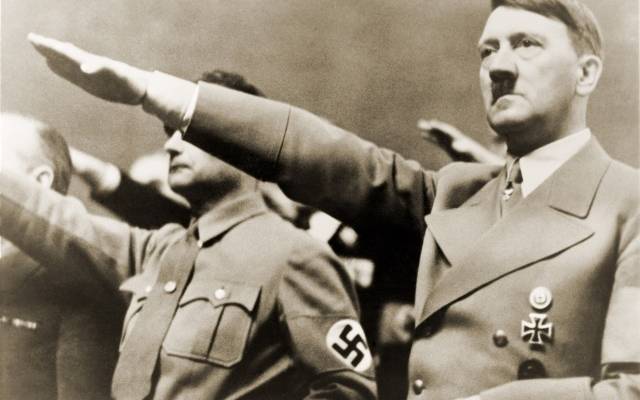AP willingly accepted the censorship of the Reich Propaganda Ministry and signed the Nazi Schriftleitergesetz (editor’s law), promising not to publish anything “calculated to weaken the strength of the Reich abroad or at home,” says Harriet Scharnberg.
The Associated Press (AP), one of the world’s leading news agencies, willingly collaborated with Hitler’s regime, disseminated Nazi propaganda photos in the United States and agreed to provide pictures for Nazi publications, including anti-Semitic SS manuals, in exchange for access, a German scholar says she has discovered.
In an article for the German journal ‘Studies in Contemporary History’, Harriet Scharnberg recounts how AP‘s office in Berlin worked with the Nazis between 1935 and 1941 and provided them with photos, while other Western news agencies were banned from reporting in Germany.
According to the article, AP willingly accepted the censorship of the Reich Propaganda Ministry and signed the Nazi Schriftleitergesetz (editor’s law), promising not to publish anything “calculated to weaken the strength of the Reich abroad or at home.”
AP also had an active member of the Nazi Party’s SS, Franz Roth, as a photographer on its staff. After Scharnberg published her findings, AP removed Roth’s pictures from its website.
Scharnberg found that AP photos were the largest source for a Nazi propaganda pamphlet called ‘The Jews in USA’, and in a different publication entitled ‘The Subhuman’ AP’s photo department provided the second-largest number of photographs, according to Scharnberg.
AP Rejects the Findings
AP released a statement on Wednesday rejecting Scharnberg’s findings.
“AP rejects the suggestion that it collaborated with the Nazi regime at any time. Rather, the AP was subjected to pressure from the Nazi regime… until the AP’s expulsion from Germany in 1941,” the news agency stated.
“AP staff resisted the pressure while doing its best to gather accurate, vital and objective news for the world in a dark and dangerous time. AP news reporting in the 1930s helped to warn the world of the Nazi menace. AP’s Berlin bureau chief, Louis P. Lochner, won the 1939 Pulitzer Prize for his dispatches from Berlin about the Nazi regime. Earlier, Lochner also resisted anti-Semitic pressure to fire AP’s Jewish employees and when that failed he arranged for them to become employed by AP outside of Germany, likely saving their lives.”
AP says that US newspapers were supplied with some of the anti-Semitic images through the German subsidiary. “Those that came from Nazi government, government-controlled or government–censored sources were labeled as such in their captions or photo credits sent to US members and other customers of the AP, who used their own editorial judgment about whether to publish the images. Images of that time from Germany had legitimate news value as editors and the public needed to learn more about the Nazis.”
In 2012, the AP was involved in a similar controversy for becoming the first Western news agency to open a new bureau in North Korea, raising questions about its ability to conduct neutral reporting from the totalitarian country.
By: United with Israel Staff
JNS.org contributed to this report.
